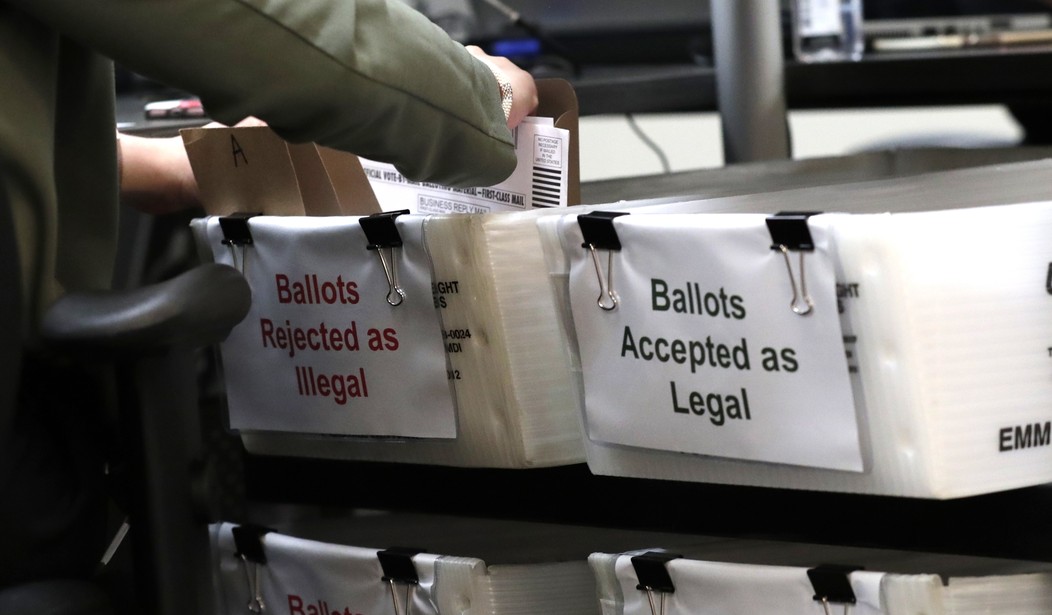Spencer touched on this New York Times analysis yesterday, which I think is quite interesting and speaks to at least some of the points I raised in my pre-Labor Day 'electoral lay of the land' post. Polling errors have not been unusual or infrequent in recent cycles, with most of the misses inflating Democrats' standing, compared to their actual vote share performance when the votes were counted. Some of the more infamous examples in the last few years were Florida's statewide polling in 2018 (both Rick Scott and Ron DeSantis were projected to lose, then both Republicans won), and Maine's 2020 Senate race:
Reminder that *not one* of these polls, dating back to February, showed Collins ahead — let alone with a near/majority. She’s now won decisively. There are some big league polling problems in American politics. What a massive win for her. pic.twitter.com/4UG8AQz5VS
— Guy Benson (@guypbenson) November 4, 2020
The final ten public polls of the race averaged out to a lead of more than five percentage points for Susan Collins' Democratic challenger. Collins then won re-election by nearly nine percentage points. The polling average misfired by about 14 points. That's scandalously bad. The last six public polls in the South Carolina Senate race two years ago showed Lindsey Graham leading his opponent by less than two points, on average. In late September, one poll showed an exact tie; another showed Graham clinging to a one-point lead. Graham won his race by more than ten points. Similar patterns played out elsewhere. Nationally, we've made this observation about the 'generic ballot' back in 2021:
Additional data points worth considering: One month out from the 2021 off-year elections, Democrats led on the avg generic ballot by nearly 4 points. They still led on election day. Then VA & NJ both swung ~11 net points toward the GOP vs. Biden's 2020 margins. https://t.co/rHpCozytAR pic.twitter.com/ximXLAreTi
— Guy Benson (@guypbenson) September 1, 2022
In 2020, the 'generic ballot' average predicted an expanded Democratic House majority, with Nancy Pelosi's team leading by nearly seven points. The actual margin? Less than half of that, enough of a difference to allow Republicans to sweep literally all of the House races rated by the Cook Political Report as 'toss-ups:'
Recommended
The Economist said there was less than a 1-in-100 chance Democrats would have 221 seats or fewer in the next Congress. The chance they would get 225 seats or fewer was 1-in-100...A lot of these quantitative forecasts also rely upon House ratings from groups like the Cook Political Report, Inside Elections and The Crystal Ball. These too seemed to undersell Republican chances. Take the Cook Political Report ratings, which have historically been very good. As of this writing, Republicans are leading in 27 of the 27 seats the Cook Political Report deemed toss-up before the election. They are ahead in all 26 of the seats that were deemed either leaning or likely Republican. Republicans are also leading in 7 of the 36 seats that were either leaning or likely to be taken by the Democrats. That is, Republicans not only pretty much swept the tossups, but they marched into Democratic territory as well. The Crystal Ball, which bravely has no tossups in its final rating, had Democrats net gaining 10 House seats. It will actually be the Republicans who will likely net gain 10 seats or more.
In the end, Democrats fell to 222 seats, with the GOP gaining 14 net seats in the cycle. I'm not here to predict that Republicans will once again substantially over-perform their polling. But it's not a crazy thought to be breezily discounted, given recent history -- in addition to the reality that ruling Democrats are facing serious historical and political headwinds. If Republicans merely achieve the modern historical average of the opposition party in a midterm election, they'd gain roughly two dozen House seats, more than enough to retake the majority. The historical expectation is even worse for the party of an unpopular president. Those statistics, plus the polling failures, are raising some alarm bells among left-leaning election watchers. The Times story mentioned above basically warns readers that some of the relatively rosy-looking numbers for Democrats at the moment feel eerily familiar:
First newsletter post: the polling warning signs are flashing again.
— Nate Cohn (@Nate_Cohn) September 12, 2022
Democrats are outpacing expectations in exactly the states where the polls overestimated Joe Biden in '20
https://t.co/Kasyy2m0zc pic.twitter.com/Qa8MCMdg0Z
That warning sign is flashing again: Democratic Senate candidates are outrunning expectations in the same places where the polls overestimated Mr. Biden in 2020 and Mrs. Clinton in 2016...The Wisconsin data is just one example of a broader pattern across the battlegrounds: The more the polls overestimated Mr. Biden last time, the better Democrats seem to be doing relative to expectations. And conversely, Democrats are posting less impressive numbers in some of the states where the polls were fairly accurate two years ago, like Georgia...If you put this relationship on a chart...you see a consistent link between Democratic strength today and polling error two years ago.
It raises the possibility that the apparent Democratic strength in Wisconsin and elsewhere is a mirage — an artifact of persistent and unaddressed biases in survey research. If the polls are wrong yet again, it will not be hard to explain. Most pollsters haven’t made significant methodological changes since the last election...The pattern of Democratic strength isn’t the only sign that the polls might still be off in similar ways. Since the Supreme Court’s Dobbs decision on abortion, some pollsters have said they’re seeing the familiar signs of nonresponse bias — when people who don’t respond to a poll are meaningfully different from those who participate — creeping back into their surveys. Brian Stryker, a partner at Impact Research (Mr. Biden is a client), told me that his polling firm was getting “a ton of Democratic responses” in recent surveys, especially in “the familiar places” where the polls have erred in recent cycles.
Quite a graphic. https://t.co/KkhU5dswF7 pic.twitter.com/98uQD6kP5D
— Guy Benson (@guypbenson) September 12, 2022
"None of this means the polls are destined to be as wrong as they were in 2020," Cohn writes, which is true. Democrats might overachieve thanks to a combination of untested or extreme Republican candidates, an easing of (still bad) economic pain (inflation, gas prices), the re-emergence of Donald Trump in the political spotlight, and Democrat-leaning blocs being energized over abortion post-Dobbs. Republicans haven't exactly been blowing it out of the water in special elections in an environment in which you'd expect red wave warning signs galore -- and some GOP operatives say they're not feeling a sizable wave building in their favor on the ground. Democrats are broadly battering Republicans in the fundraising department, too. But consider history, the 'fundamentals' (unpopular president, widespread public discontent, poor economy), and the polling problems rehearsed above, and the potential for a big GOP night in early November remains a very real possibility.

























Join the conversation as a VIP Member